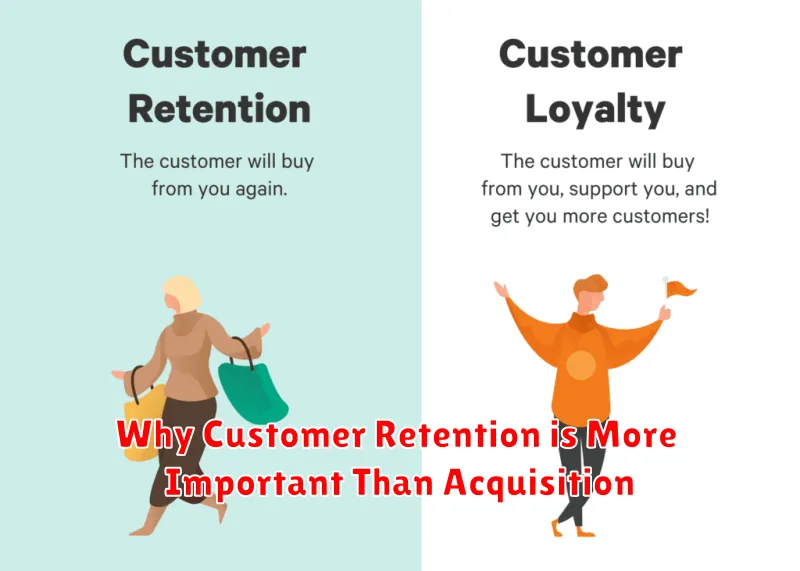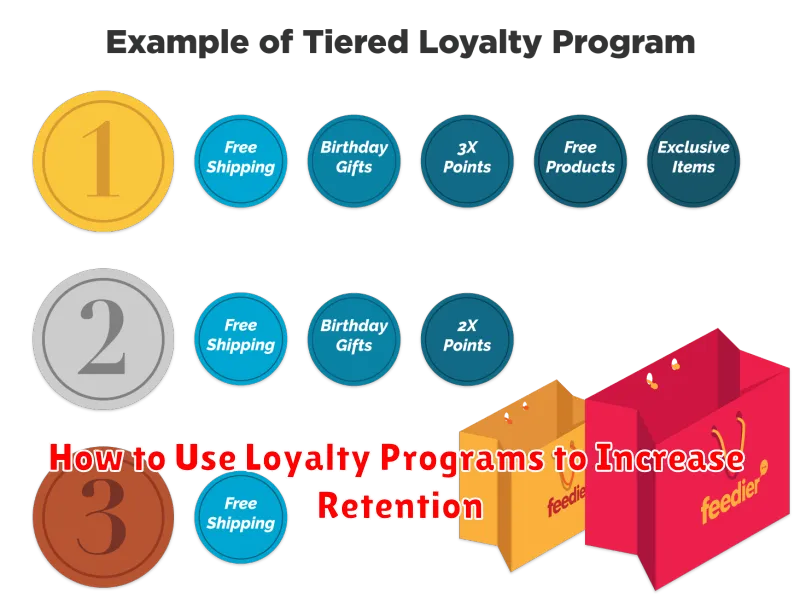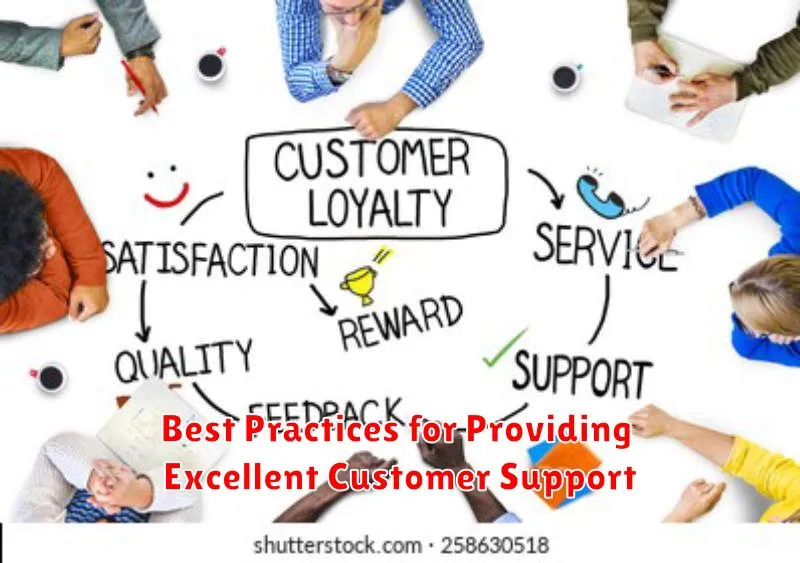Are you struggling to keep your online customers coming back for more? This ultimate guide to customer retention for online businesses will equip you with the essential strategies to cultivate loyal customers and dramatically increase your profitability. We’ll explore proven methods for improving customer experience, leveraging data-driven insights, and building long-term relationships that drive sustainable business growth. Discover how to implement effective customer retention strategies, reduce customer churn, and unlock the true potential of your online business.
Why Customer Retention is More Important Than Acquisition

While acquiring new customers is crucial for growth, customer retention offers a significantly higher return on investment (ROI). Existing customers are more likely to purchase again, increasing lifetime value (LTV).
Acquiring new customers often involves substantial marketing expenses and a lengthy sales cycle. In contrast, retaining existing customers is generally less expensive. Strategies such as loyalty programs and personalized communication are far more cost-effective than constantly seeking out new leads.
Retained customers often act as brand ambassadors, recommending your products or services to their network through word-of-mouth marketing. This organic marketing is invaluable and significantly cheaper than paid advertising campaigns.
Furthermore, loyal customers provide valuable feedback that can be used to improve products and services. This continuous improvement cycle fosters stronger customer relationships and builds a more robust business.
In conclusion, focusing on customer retention yields substantial financial benefits, improves brand loyalty, and drives organic growth, making it a more strategic and ultimately more profitable approach than solely concentrating on customer acquisition.
Building Strong Relationships with Your Customers
Building strong customer relationships is paramount for online business success. It’s not just about making a sale; it’s about fostering loyalty and repeat business.
Personalized communication is key. Utilize customer data to tailor your marketing messages and offers, demonstrating you understand their individual needs. This could involve targeted email campaigns, personalized product recommendations, or even simply addressing them by name.
Exceptional customer service is crucial. Respond promptly and effectively to inquiries and address complaints with empathy and professionalism. Proactive customer support, such as offering helpful resources or anticipating potential issues, can significantly enhance the customer experience.
Active listening is essential. Encourage feedback through surveys, reviews, and social media engagement. Analyze this data to identify areas for improvement and demonstrate that you value your customers’ opinions.
Building a community around your brand can foster a sense of belonging and loyalty. This might involve creating a social media group, hosting online events, or establishing a loyalty program that rewards repeat customers.
By focusing on these strategies, online businesses can cultivate strong, lasting relationships with their customers, leading to increased customer retention and long-term success.
How to Use Loyalty Programs to Increase Retention

Loyalty programs are a powerful tool for increasing customer retention. By rewarding repeat business, you incentivize customers to continue purchasing from your online business. Effective programs offer tiered rewards, personalized offers, and exclusive access to products or services.
Program design is crucial. Consider what rewards resonate with your target audience. Points systems, discounts, early access to sales, or exclusive merchandise are all possibilities. Make sure the program is easy to understand and join, and that earning and redeeming rewards is straightforward.
Communication is key. Regularly communicate program updates, reward accrual, and exclusive offers to members through email marketing, in-app notifications, or social media. Highlight the value proposition of the program to encourage continued participation.
Data analysis plays a vital role. Track program performance to identify areas for improvement. Analyze which rewards are most effective, member engagement levels, and the overall impact on customer retention rates. Use this data to optimize your program and maximize its impact.
By implementing a well-designed and effectively communicated loyalty program, you can significantly enhance customer retention, build brand loyalty, and foster long-term relationships with your online customers, leading to increased revenue and profitability.
The Role of Personalized Marketing in Customer Retention
Personalized marketing plays a crucial role in boosting customer retention for online businesses. By leveraging data about individual customer preferences and behaviors, businesses can tailor their marketing messages and offers to resonate more effectively. This targeted approach fosters a stronger sense of connection and loyalty.
Personalized email campaigns, for instance, can significantly improve open and click-through rates compared to generic blasts. Similarly, customized product recommendations on e-commerce websites can increase sales and engagement. Personalized website experiences, adjusting content and offers based on user data, enhance the overall customer journey.
The key to successful personalized marketing is data-driven insights. Analyzing customer data allows businesses to segment their audience effectively, identify high-value customers, and anticipate their needs. This data-informed approach facilitates the development of more relevant and effective marketing strategies, leading to increased customer satisfaction and retention.
Ultimately, consistent and relevant communication built on personalized data helps nurture relationships with customers, turning one-time transactions into lasting loyalty. This translates directly into higher customer lifetime value and sustainable business growth.
How to Leverage Customer Feedback to Improve Your Business
Customer feedback is invaluable for improving your online business. Actively soliciting and analyzing this feedback allows you to identify areas needing improvement and strengthen customer relationships.
Implement various feedback collection methods: Surveys, reviews, social media monitoring, and direct communication channels like email or in-app chats provide diverse perspectives. Analyze the data to identify recurring themes and prioritize the most pressing issues.
Focus on actionable insights: Don’t just collect feedback; use it! Identify patterns in negative feedback (e.g., slow shipping, confusing website navigation) and address them. Positive feedback highlights what’s working well – leverage this to reinforce successful strategies and build upon them.
Transparency and responsiveness are key: Acknowledge feedback publicly (where appropriate) and show customers you’re taking action. A prompt response, even a simple acknowledgment of their concern, demonstrates you value their input and builds trust.
Regularly review and adapt: Feedback is an ongoing process, not a one-time event. Continuously monitor feedback channels, analyze trends, and make adjustments to your products, services, and customer service strategies. This iterative approach ensures your business remains responsive to customer needs.
By effectively leveraging customer feedback, you can improve customer satisfaction, boost loyalty, and ultimately, drive sustainable business growth.
Best Practices for Providing Excellent Customer Support

Responsiveness is key. Aim to respond to inquiries within minutes or hours, not days. Set clear response time expectations and consistently meet them.
Personalization builds loyalty. Use the customer’s name and address their specific issue directly. Show you understand their frustration and empathize with their situation.
Multiple channels of support are essential. Offer options like email, phone, live chat, and social media to cater to diverse customer preferences.
Empower your support team. Provide them with the necessary tools, training, and autonomy to resolve issues efficiently and effectively. Enable them to make decisions without needing multiple layers of approval.
Proactive support prevents problems. Anticipate common issues and provide helpful resources like FAQs, tutorials, and knowledge bases. Implement robust internal processes for pre-emptive issue detection.
Gather feedback regularly. Use surveys and reviews to understand customer satisfaction levels and identify areas for improvement. Actively solicit and act upon customer feedback.
Track key metrics. Monitor metrics such as resolution time, customer satisfaction (CSAT), and Net Promoter Score (NPS) to measure the effectiveness of your support efforts and identify areas for improvement.
How to Win Back Lost Customers
Winning back lost customers requires a strategic approach focusing on understanding why they left. Analyzing customer feedback, surveys, and support tickets can provide valuable insights.
Once you understand the reasons for churn, you can tailor your reacquisition efforts. Personalize your communication; a generic email is unlikely to be effective. A sincere apology for any shortcomings is crucial.
Offer a compelling incentive for their return. This could be a discount, free shipping, or exclusive access to a new product or service. Make it worthwhile for them to reconsider.
Follow up is key. Don’t expect immediate results. A multi-touch approach, including email, social media, or even a phone call (depending on your relationship), can significantly improve your chances of success. Ensure consistent branding and messaging across all channels.
Finally, learn from your mistakes. Analyze the reasons for customer churn to prevent future losses. Implement improvements to your products, services, and customer support to increase overall retention.
Tracking Customer Retention Metrics for Business Growth
Tracking the right customer retention metrics is crucial for online businesses aiming for sustainable growth. These metrics provide insights into customer behavior and the effectiveness of retention strategies.
Customer churn rate, representing the percentage of customers lost over a specific period, is a primary indicator. A high churn rate necessitates immediate attention to identify and address underlying issues.
Customer lifetime value (CLTV) measures the total revenue generated by a customer throughout their relationship with your business. Improving CLTV is a key objective, achieved through enhanced customer experiences and effective retention strategies.
Repeat purchase rate shows the percentage of customers making repeat purchases. This metric directly reflects customer loyalty and satisfaction with your products or services.
Customer retention rate, the percentage of customers retained over a given period, provides a comprehensive view of your retention efforts. Monitoring this metric allows for timely adjustments to strategies.
Net Promoter Score (NPS) gauges customer loyalty and willingness to recommend your business. A high NPS indicates strong customer satisfaction and contributes to higher retention rates.
By diligently tracking and analyzing these key performance indicators (KPIs), businesses can gain valuable insights into customer behavior, identify areas for improvement, and ultimately drive sustainable growth through enhanced customer retention.

